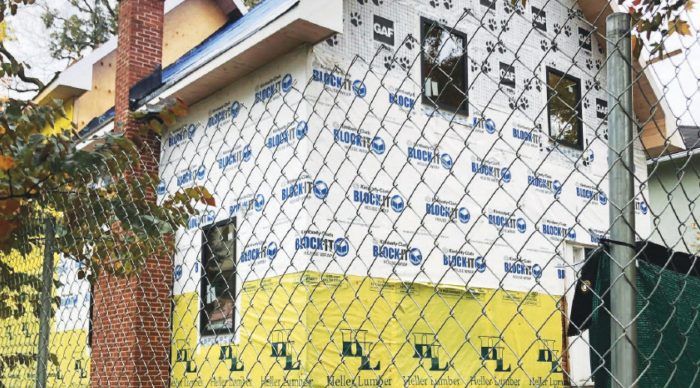Hodge-Podge Housewrap
There may be a good reason to install more than one brand of water-resistive barrier, but watch out for compatibility issues.

I’ve been watching a house in my neighborhood undergo a major renovation. The contractor used at least three different brands of housewrap. It doesn’t appear that there’s any rhyme or reason for the locations of the different types, but it has me wondering if it’s OK to mix and match—and if there could be a reason for using different types of housewrap on different parts of a house?
—Larry Kear; Evanston, Ill.
Editorial Advisor Mike Guertin Replies
There’s no problem using different types of mechanically attached housewrap on a house other than for warranty coverage. I suspect the various manufacturers would point fingers at each other should there be a leak in a wall where two or three different wraps are present. There could also be compatibility problems if the tape’s adhesive doesn’t match the housewrap. However, if the patchwork wraps are installed according to their respective installation guides, there shouldn’t be a problem.
I’ve used a couple different brands of housewrap when I’m buying from different building-material dealers who stock different brands or when I run short during a job and finish with a saved roll from my stock. One good reason to install different types of housewrap is when matching the housewrap to different claddings on the same house. For instance, a section with hollow-back vinyl siding would be fine with a basic flat housewrap, a section clad with fiber-cement lap siding may warrant a drainable wrap for better water management, and a section with open-gap siding over furring would need an unobtrusive, unbranded dark-colored wrap with UV protection.
From Fine Homebuilding #324
RELATED STORIES
- Installing Housewrap
- Keeping Water Out of Walls: Housewrap and Beyond
- What’s the Building Code for Housewrap Installation?
Need help?
Get answers you can trust from the experienced pros at FHB. Email your question to [email protected].



























